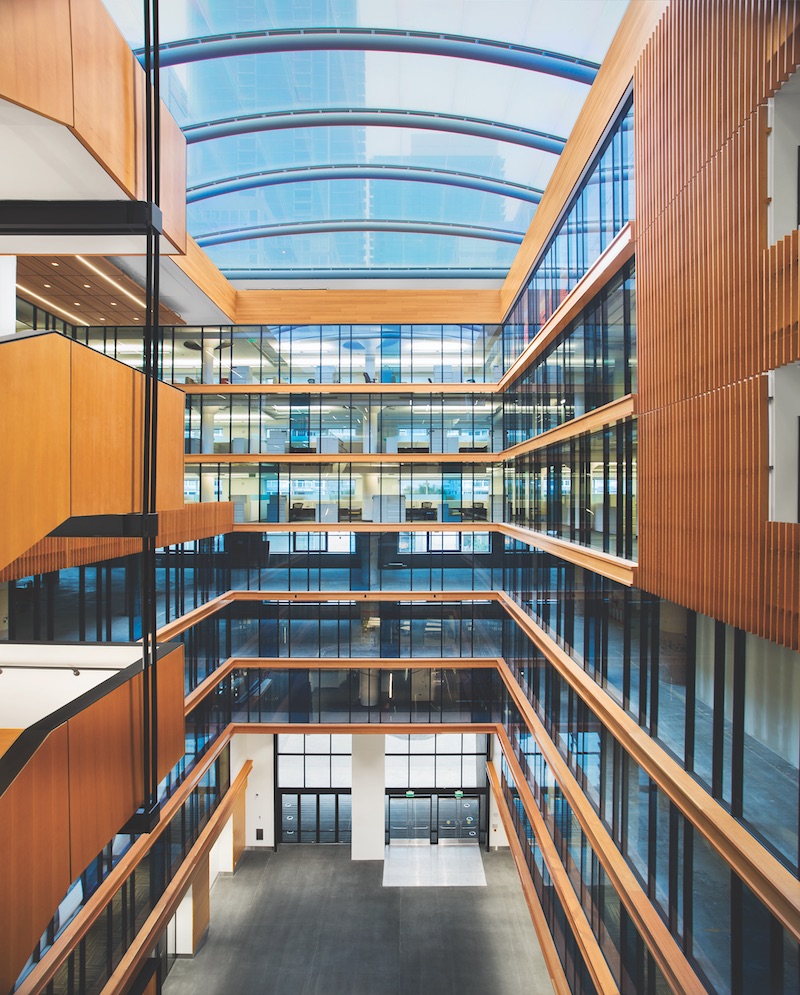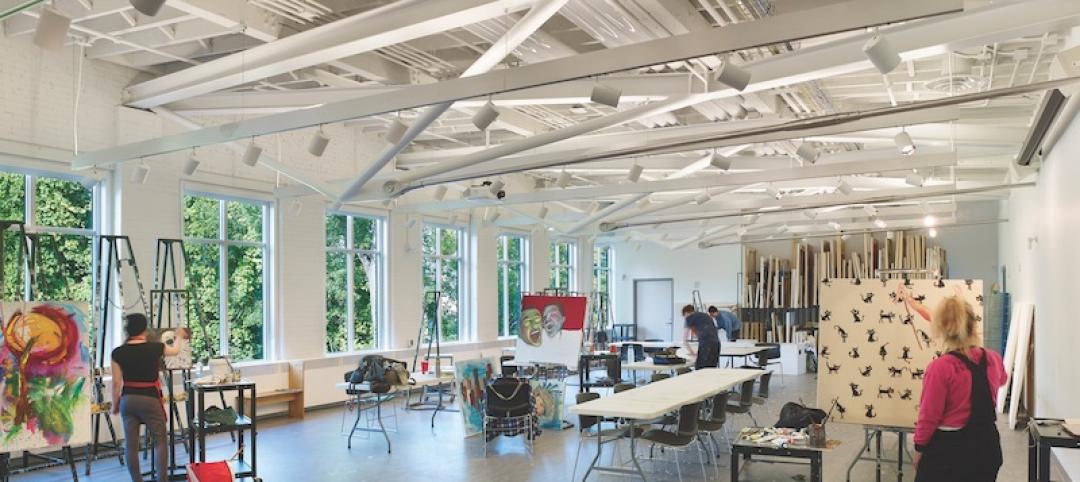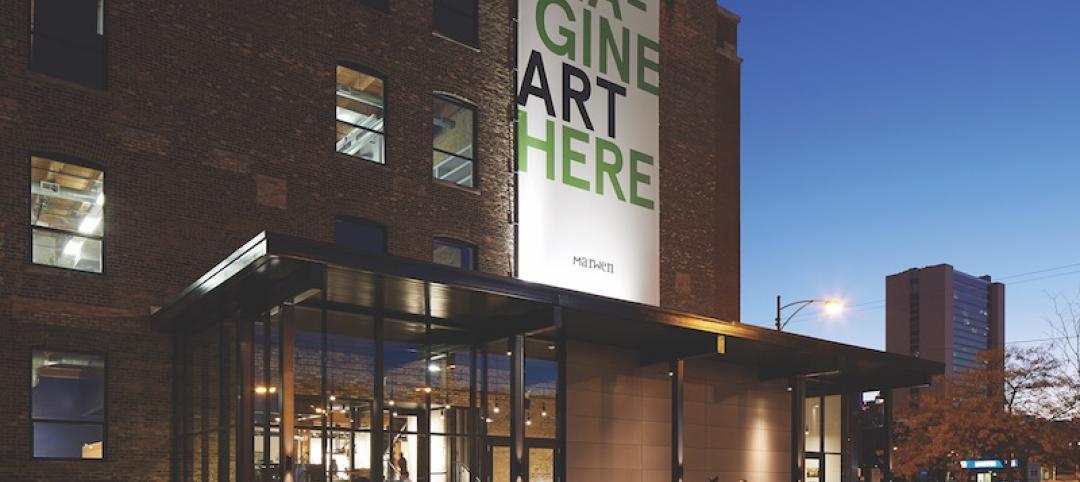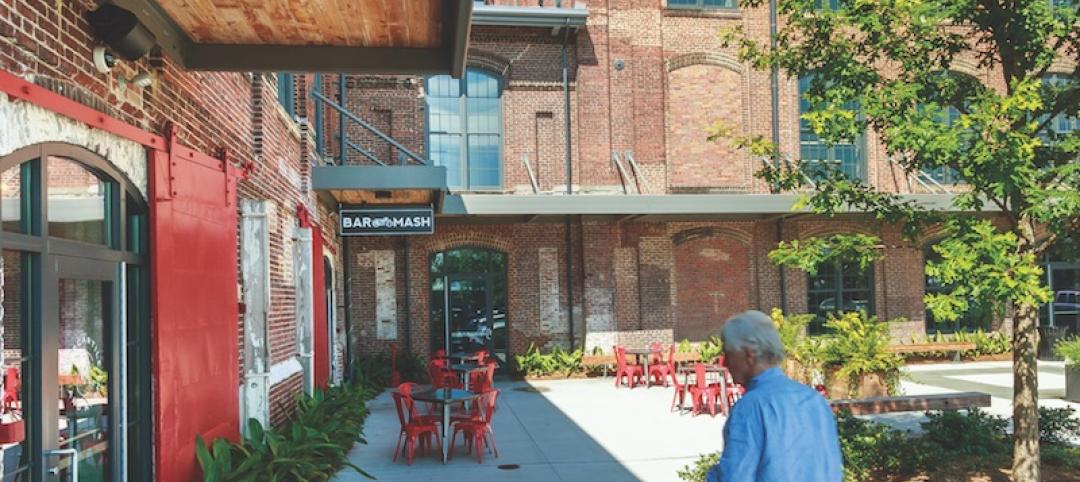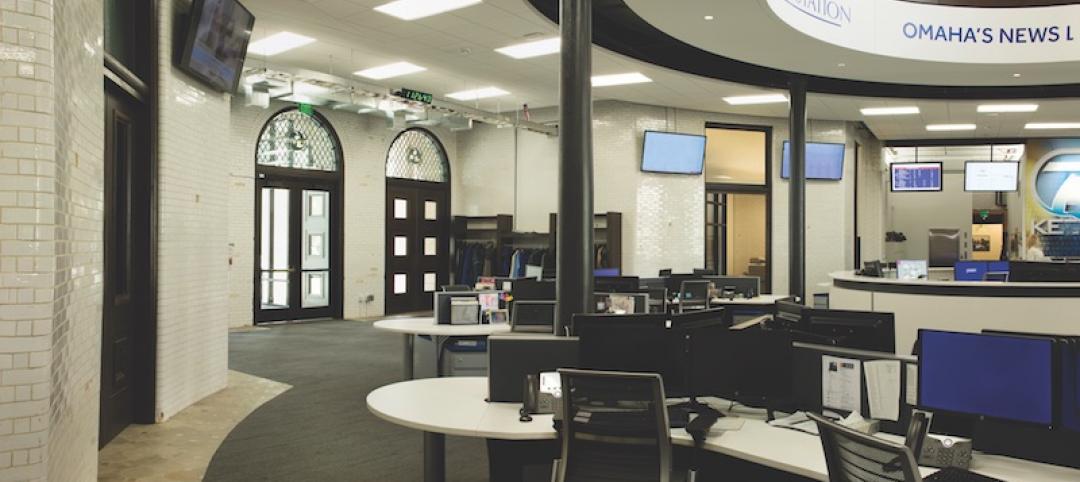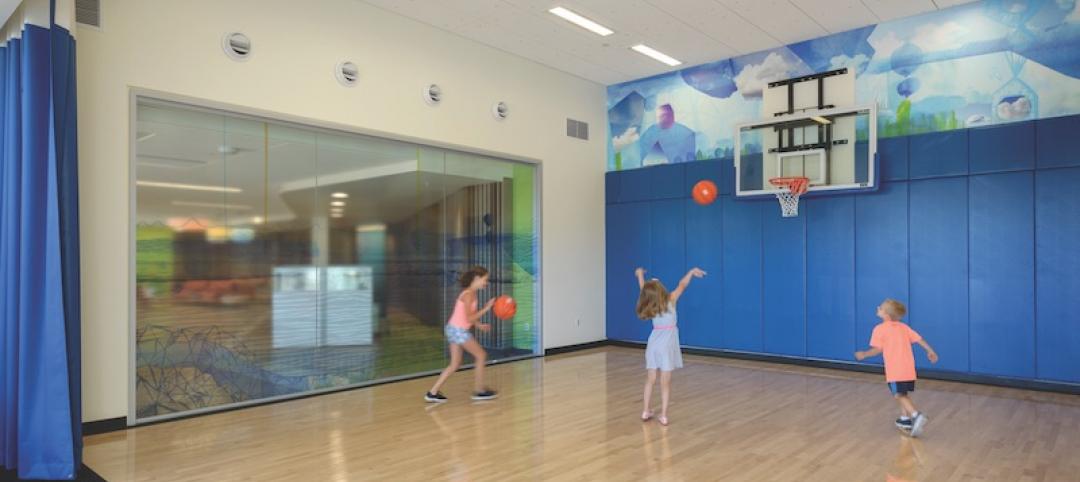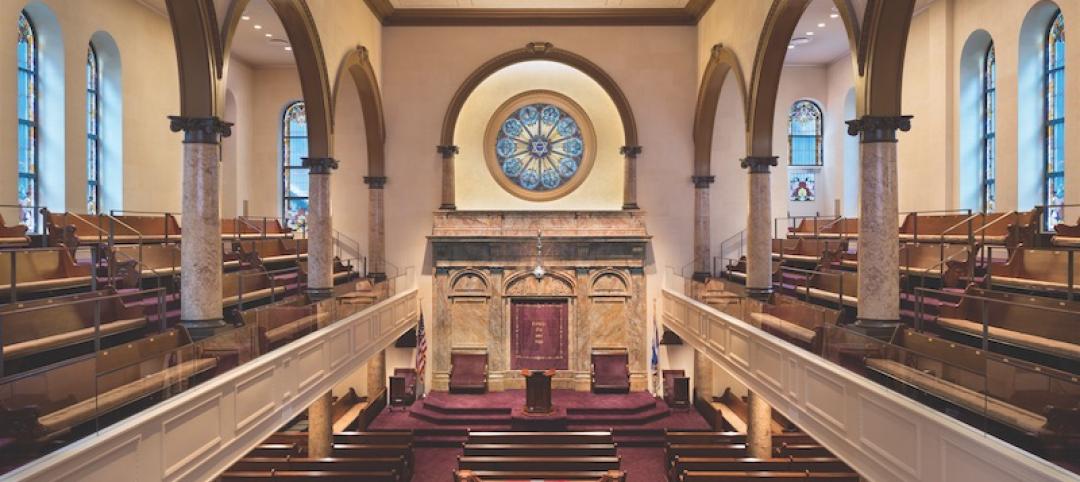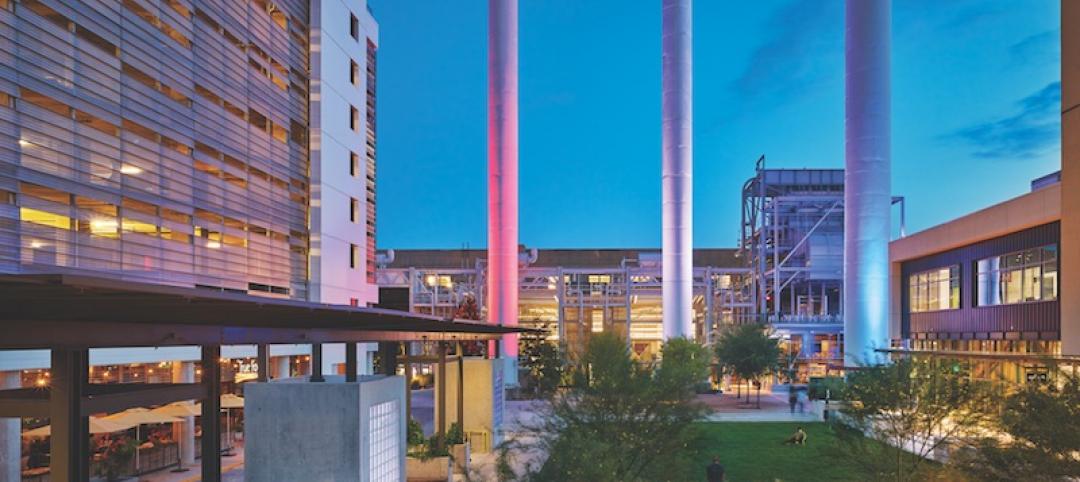The 525,000-sf Bay Area Metro Center, at 390 Main Street, San Francisco, was originally built by the federal government in 1942 to make armored vehicles. Three years ago, the owner, Bay Area Headquarters Authority, commissioned McCarthy Building Companies to lead a much-needed seismic upgrade and structural renovation. The structure’s 60,000-sf floor plates also made the interior dark and foreboding, and BAHA wanted to improve working conditions for its employees and tenants.
The centerpiece is an eight-story atrium that brings natural light into the offices of BAHA, the Bay Area Toll Authority, the Metropolitan Transportation Commission, the Bay Area Air Quality Management District, the Association of Bay Area Governments, and the U.S. Drug Enforcement Agency.
The seismic upgrade meant that the contractor would have to drill 27,000 holes into the thick interior concrete walls and floor—a considerable safety risk. McCarthy worked with a team from UC San Francisco, UC Berkeley, and toolmaker Hilti to design a dual-headed drill rig that reduced worker fatigue and the volume of airborne concrete dust kicked up by the drilling.
Zero accidents were recorded.
PROJECT SUMMARY
Silver Award Winner | San Francisco, Calif.
Building Team: McCarthy Building Companies (submitting firm, GC); Bay Area Headquarters Authority (owner); Perkins+Will (architect); TEF Design (interior architect); Holmes Culley (SE); WSP | Parsons Brinckerhoff (MEP); TEECOM (communications); and Harris & Associates (CM).
Details: 525,000 sf. Construction cost: $115 million. Construction time: January 2013 to April 2016. Delivery method: CM at risk.
Related Stories
Reconstruction Awards | Nov 16, 2016
Reconstruction Awards: Marilyn I. Walker School of Fine and Performing Arts, Brock University
The five-story brick-and-beam structure is an adaptive reuse of the Canada Hair Cloth Building, where coat linings and parachute silks were once made.
Reconstruction Awards | Nov 16, 2016
Reconstruction Awards: Marwen
Marwen currently offers 100 studio courses to 850 underserved students from 295 schools and 53 zip codes.
Reconstruction Awards | Nov 16, 2016
Reconstruction Awards: The Cigar Factory
The Cigar Factory was originally a cotton mill but became the home of the American Cigar Company in 1912.
Reconstruction Awards | Nov 16, 2016
Reconstruction Awards: St. Patrick's Cathedral
The cathedral, dedicated in 1879, sorely needed work.
Reconstruction Awards | Nov 15, 2016
Reconstruction Awards: Lovejoy Wharf
After demolishing the rotten wood wharf, Suffolk Construction (GC) built a new 30,000-sf landscaped quay, now known as Lovejoy Wharf.
Reconstruction Awards | Nov 15, 2016
Reconstruction Awards: KETV-7 Burlington Station
The 1898 Greek Revival train terminal, which was listed on the National Register of Historic Places in 1974, had been abandoned for nearly four decades.
Reconstruction Awards | Nov 14, 2016
Reconstruction Awards: The Gallery at the Three Arts Club
On the exterior of the building, masonry and terra cotta were revitalized, and ugly fire escapes on the south façade were removed.
Reconstruction Awards | Nov 14, 2016
Big-box store rescaled to serve as a preventive-care clinic
The hospital was attracted to the big box’s footprint: one level with wide spans between structural columns, which would facilitate a floor plan with open, flexible workspaces and modules that could incorporate labs, X-ray, ultrasound, pharmacy, and rehab therapy functions.
Reconstruction Awards | Nov 14, 2016
Fire-charred synagogue rises to renewed glory
The blaze left the 110-year-old synagogue a charred shell, its structural integrity severely compromised.
Reconstruction Awards | Nov 11, 2016
Adaptive reuse juices up an abandoned power plant
The power plant was on the National Register of Historic Places and is a Recorded Texas Historic Landmark.


